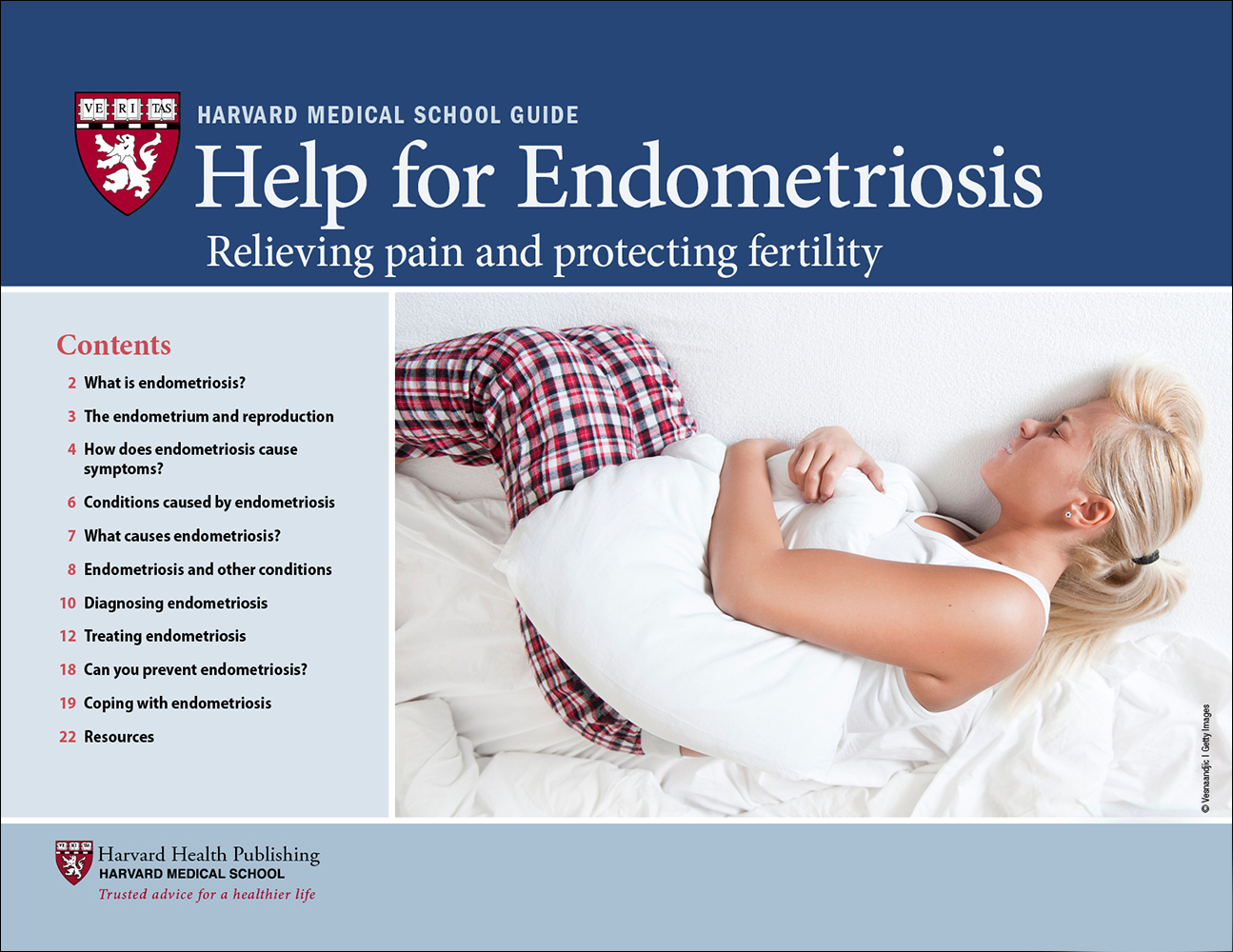Help for Endometriosis
From Harvard Medical School experts
Don’t let endometriosis slow you down!
Is endometriosis negatively impacting your career, relationships, and overall wellbeing? If so, now is the time to take charge of your endometriosis once and for all. The good news is, you don’t have to do it alone. Help for Endometriosis — an online guide from doctors at Harvard Medical School — explains how you can control the pain and other symptoms of endometriosis, protect your fertility, and get back to the life you want.
What you can do to help prevent endometriosis
Because the causes of endometriosis are unclear, there’s no sure way to prevent endometriosis. But as you’ll learn in Help for Endometriosis, you can take steps to reduce the likelihood you’ll develop the condition — in particular, by reducing exposure to estrogen. With this in mind, the report suggests actions like taking lower-estrogen birth control pills, losing weight (because fatty tissue produces more estrogen), getting regular exercise, and avoiding too much alcohol or caffeine, which can raise estrogen levels.
The latest hormone therapies for endometriosis
Help for Endometriosis details the most advanced hormone treatments for endometriosis. You’ll learn about birth control pills as well as other hormone delivery methods such as patches, rings, injections and implants. You’ll also read about gonadotropin-releasing hormone agonists and antagonists, which can help lower estrogen levels and thereby reduce symptoms. In addition, the report discusses aromatase inhibitors, a new category of medicines designed to reduce estrogen levels by targeting the protein that makes estrogen.
Understanding your surgical options
For some women, surgery may be the right treatment approach. Help for Endometriosis tells you what to expect during a laparoscopy, in which surgeons can both diagnose and remove endometrial tissue at the same time. There’s also information about laparotomy, a procedure that removes more extensive endometrial tissue. And you’ll learn how a once-common surgery for endometriosis — removal of the uterus and ovaries — may increase the risk of heart disease, obesity, high blood pressure, and even dementia in women under 40.
Endometriosis when you’re expecting (or hope to be)
What does endometriosis mean for your fertility? As you’ll read in Help for Endometriosis, most women with endometriosis are able to conceive and bear children. Thanks to the report, you’ll understand and be able to plan for the risks endometriosis may pose during pregnancy.
Coping—and thriving—with endometriosis
You don’t have to put up with the pain and other symptoms of endometriosis. Help for Endometriosis gives you — a look at the different symptoms you may experience with endometriosis…the latest research on the causes of endometriosis…the links between endometriosis and other conditions like heart disease and migraine…a better understanding of how endometriosis is diagnosed…suggestions for relieving pain during sex…endometriosis after menopause…and more!


